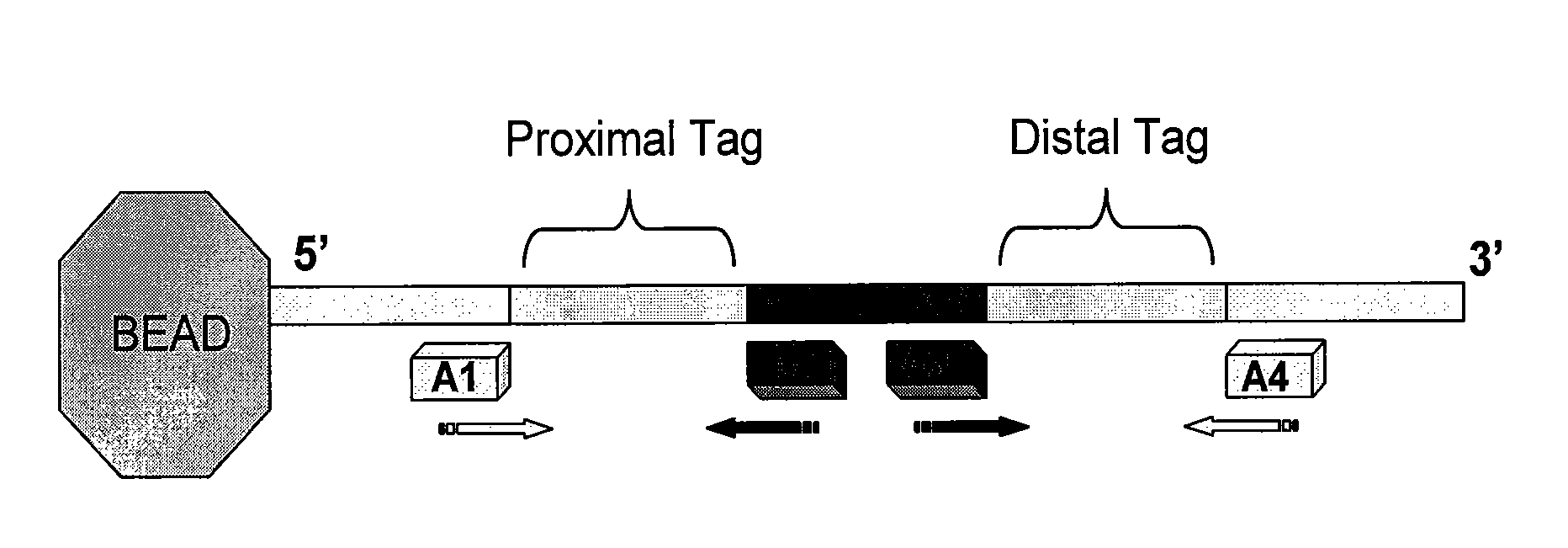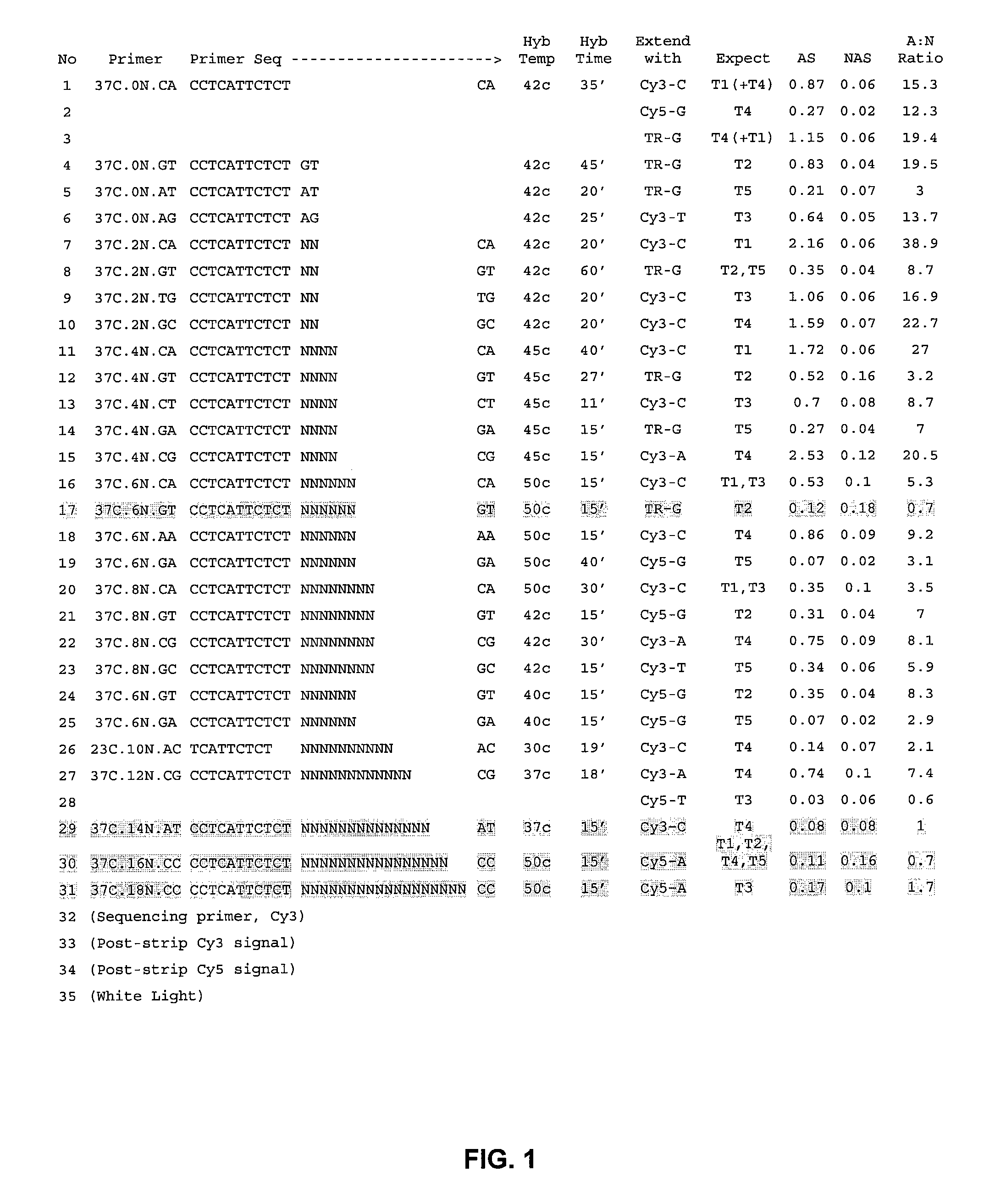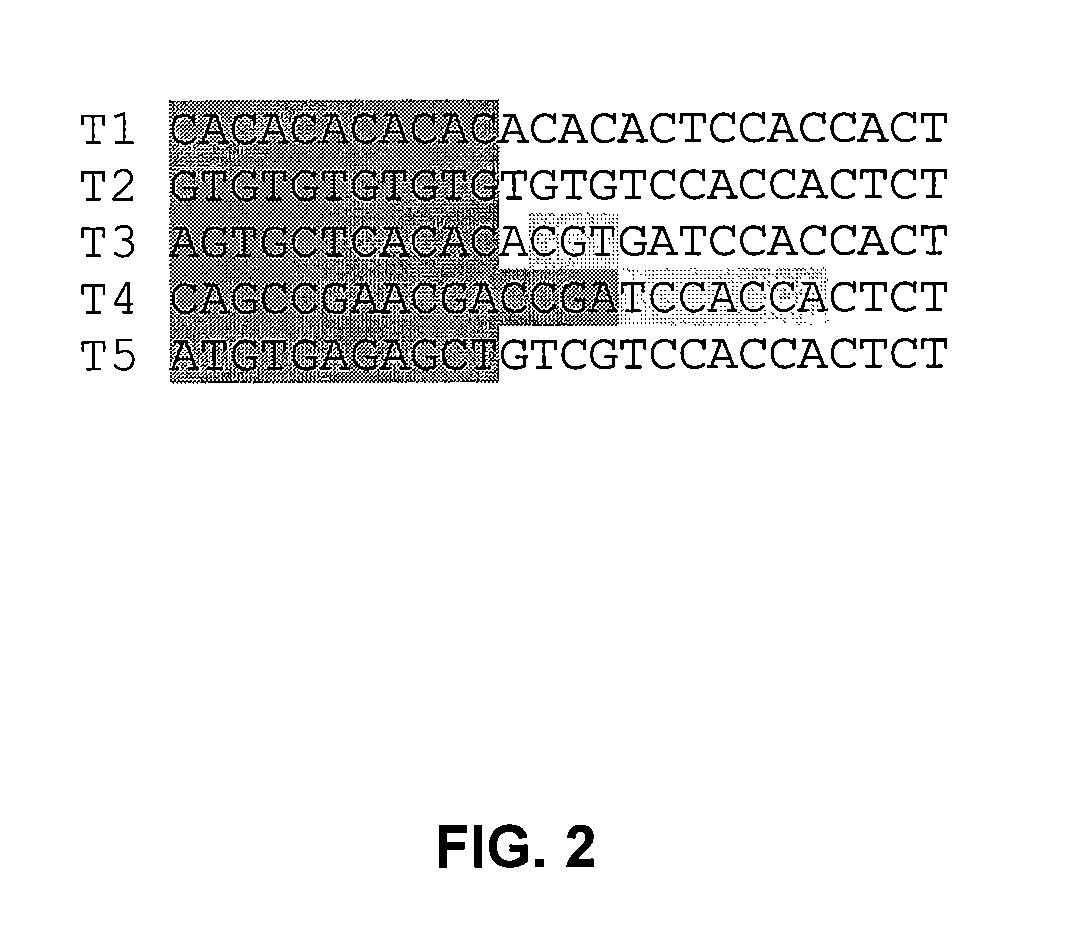Wobble sequencing
a technology of dna sequencing and compositions, applied in the field of dna sequencing compositions, can solve the problems of difficult to distinguish single from multiple incorporation events, difficult to decode consecutive runs of the same base in the unknown sequence, and the polymerases typically utilized in such reactions do not efficiently incorporate nucleotides, etc., to improve read length, improve signal quality, and accelerate technology development
- Summary
- Abstract
- Description
- Claims
- Application Information
AI Technical Summary
Benefits of technology
Problems solved by technology
Method used
Image
Examples
example i
Cycle Protocol
Typical cycles were as follows:
[0025] 1. Hybridize sequencing primer (15 minutes, 10 μM primer in 6×SSPE, 40-50° C.)
[0026] 2. Extend (4 minutes, SSB+polymerase+nucleotide)
[0027] 3. Wash (2 minute)
[0028] 4. Image acquisition
[0029] 5. Strip primer (5 minutes, Wash 1E, 70′ C)
[0030] If the wobble-bases were fixed (poly-A, poly-G, poly-C, or poly-T instead of poly-N), extensions were no longer efficient. Without intending to be bound by theory, this indicates that some degree of “sorting” is going on during the hybridization that is critical to the overall process working. Hoping for this to occur, the “anchor sequence” is purposefully short (Tm=37° C. if it were alone), weighting the hybridization process to depend to a greater degree on the “wobble” or degenerate sequences. Initial data indicated that SEQUENASE™ was significantly better than Klenow for this approach. Primer-stripping was initially very inefficient with beads. It only started working when the bead ...
example ii
Primer Nomenclature
[0031] A typical primer-name below is “37C.2N.CA”. For the primers described herein, the anchor sequence is a trimmed version of the original FISSEQ primer for the T1 . . . T5 template. The “37C” (or “23C” or the like) indicates the extent to which it has been trimmed (i.e. 37C is the Tm of the anchor sequence if it were a stand-alone primer). The “2N” indicates that the anchor-sequence is followed by two full “wobble” or degenerate bases, and the CA indicates the fixed two terminal bases. This primer would extend to the 5th base, thus sequencing 3 bases (base 3, 4 and 5) on 1 / 16th of the templates of a random library.
[0032] In the examples below, primers with even numbers of “wobble” or degenerate bases and terminal bases that match at least one of the five T1 . . . T5 templates were focused on to ensure extension at every cycle. For a given “reach-length,” this was approximately 1 / 4th of the primers that would be required in a real sequencing experiment involv...
example iii
Proof of Principle on Loaded Beads
[0033]FIG. 1 depicts results from top-layered, 1 μM beads with loaded T1. . . T5 templates. These are primers that would be required in a full sequencing experiment on unknown sequence. Primers were ordered to sequence through to the 11th base on all five templates (37 C.0N.XX through 37 C.8N.XX). Only one primer was ordered for 37 C.10N.XX through 37 C.18N.XX.
[0034] Failures are listed in yellow. Without intending to be bound by theory, the first failure (cycle 17), was likely due to manual error in preparing the extension reagent mix, as its repeat (cycle 24) was successful, and this primer worked well in the emulsion-bead experiment below. Without intending to be bound by theory, the remaining failures correlate with attempts at longer reads. The 37 C.12N.CG primer, interestingly, works quite well for one template but not another. In a subsequent experiment, using SEQUENASE™ instead of Klenow resulted in both templates working with this primer....
PUM
| Property | Measurement | Unit |
|---|---|---|
| fluorescent in situ sequencing | aaaaa | aaaaa |
| density | aaaaa | aaaaa |
| read-length | aaaaa | aaaaa |
Abstract
Description
Claims
Application Information
 Login to View More
Login to View More - R&D
- Intellectual Property
- Life Sciences
- Materials
- Tech Scout
- Unparalleled Data Quality
- Higher Quality Content
- 60% Fewer Hallucinations
Browse by: Latest US Patents, China's latest patents, Technical Efficacy Thesaurus, Application Domain, Technology Topic, Popular Technical Reports.
© 2025 PatSnap. All rights reserved.Legal|Privacy policy|Modern Slavery Act Transparency Statement|Sitemap|About US| Contact US: help@patsnap.com



